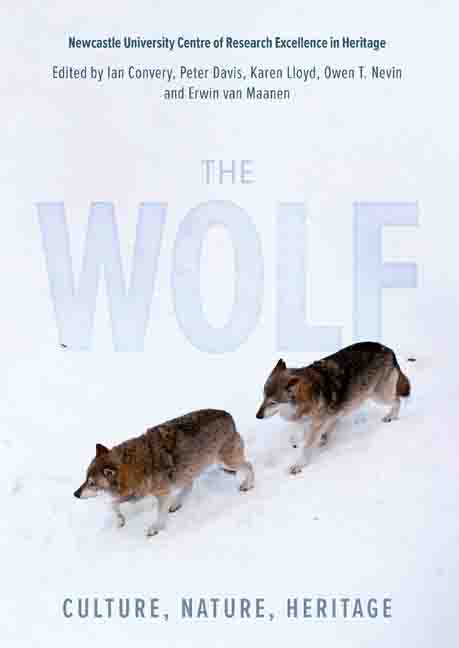Book contents
- Frontmatter
- Dedication
- Contents
- List of Illustrations
- Preface and Acknowledgments
- List of Abbreviations
- Poem: Trophic Cascade by Camille T Dungy
- Foreword
- Part I Imagining the Wolf
- Part II What Makes the Wolf
- Part III Return of the Wolf
- Part IV Personal Encounters
- Afterword: The Ecological Disadvantage of Living on an Island
- Glossary
- List of Contributors
- Index
22 - The Wolves of Yellowstone: Saviours of the Songbird or Pieces of the Puzzle?
Published online by Cambridge University Press: 10 January 2024
- Frontmatter
- Dedication
- Contents
- List of Illustrations
- Preface and Acknowledgments
- List of Abbreviations
- Poem: Trophic Cascade by Camille T Dungy
- Foreword
- Part I Imagining the Wolf
- Part II What Makes the Wolf
- Part III Return of the Wolf
- Part IV Personal Encounters
- Afterword: The Ecological Disadvantage of Living on an Island
- Glossary
- List of Contributors
- Index
Summary
INTRODUCTION
The contemporary story of the wolves of Yellowstone National Park (YNP) has become part of the fabric of the American west. The short film, How Wolves Change Rivers, which combines footage of Yellowstone with narration by journalist George Monbiot (Sustainable Human, 2014) has been viewed over 43 million times (including adoption by school curricula globally), and has contributed to popularising the concept that reintroducing wolves has caused ‘trophic cascades’ in YNP. This is an irresistible story, one which appeals to conservationists on many levels. Wolves are charismatic carnivores, and the film's narrative provides a simple explanation of trophic cascades and their potential. Monbiot's narration speaks of ‘bare valley sides’ becoming ‘forests of aspen and willow and cottonwood’, with wolves causing a ‘radical change’ in ungulate behaviour.
This is known as the ‘ecology of fear’ effect, where the presence of a predator causes a behavioural change in another species. In Yellowstone the introduction of wolves leads ungulates to avoid areas where they are most vulnerable to predation. The decrease in valley herbivory has resulted not only in an increase in species diversity as available habitat increased, but also the increased vegetation cover led to a reduction in soil erosion. It is argued that the ‘instrumentally valuable’ wolves have also transformed the physical geography of YNP – or so the story goes. However, there is still considerable scientific debate regarding the ecological impact of the wolf reintroduction to YNP and the mechanisms by which impacts are mediated, as will be discussed later in the chapter.
Emma Marris (2014, 2017), amongst others, has questioned the evidence that the re-introduction of wolves triggered the purported trophic cascades in Yellowstone. In a 2014 Nature paper she cites the work of Marshall et al (2013), who suggest that it is beavers, rather than wolves, that play a key role in helping willows thrive, adding that the removal of wolves in the 1920s allowed elk to eat so much willow that there was none left for the beavers, causing their decline. Marris's point is that the absence of a scientific consensus is not reflected in the popular press, with a simplistic version of the scientific story being reported far more often than the more complex, but more accurate, reality (Marris 2017).
- Type
- Chapter
- Information
- The WolfCulture, Nature, Heritage, pp. 249 - 258Publisher: Boydell & BrewerPrint publication year: 2023

